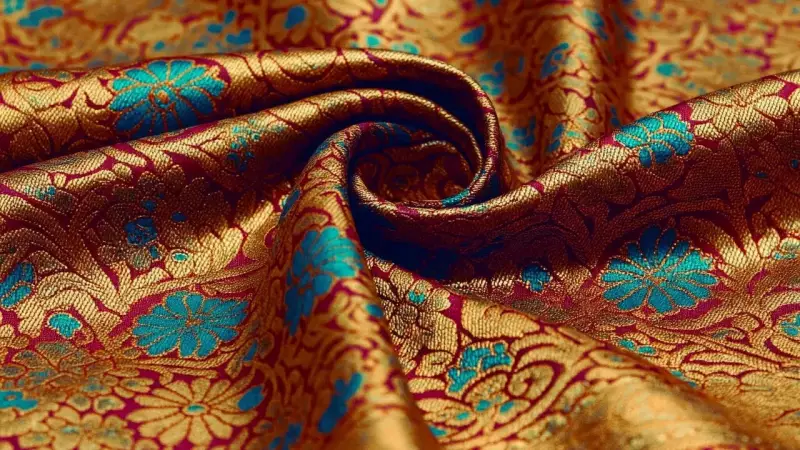
India's handloom industry is a vibrant tapestry of cultural heritage, where every thread tells a story of ancient craftsmanship and artistic excellence. These textiles aren't just fabrics; they're living embodiments of India's diverse cultural landscape. Let's explore ten iconic handloom treasures that have captivated the world with their beauty and craftsmanship.
1. Banarasi Silk - The Royal Weave
Hailing from Varanasi, Banarasi silk sarees are synonymous with luxury and opulence. Woven with intricate gold and silver zari work, these sarees feature elaborate Mughal-inspired patterns including floral motifs and intricate brocades. Traditionally worn by brides, each Banarasi silk saree can take up to a month to create, making it a true labor of love.
2. Kanjeevaram Silk - South India's Pride
From the temple town of Kanchipuram comes these magnificent silk sarees known for their heavy weight and rich colors. What sets Kanjeevaram apart is its contrasting borders and pallus, often featuring traditional motifs like peacocks, temples, and religious symbols. The durability and sheen of these sarees make them family heirlooms passed through generations.
3. Pashmina - The Cashmere Crown
Originating from the high altitudes of Ladakh, Pashmina shawls are woven from the fine undercoat of Changthangi goats. These incredibly soft and warm shawls are so fine that they can pass through a ring. The intricate embroidery, particularly the famous Kani weave, makes each Pashmina shawl a masterpiece of Kashmiri craftsmanship.
4. Paithani - Maharashtra's Golden Treasure
Recognizable by their distinctive peacock and flower motifs, Paithani sarees from Maharashtra are characterized by their kaleidoscopic borders and plain pallus. Woven with pure gold threads, these sarees change color when viewed from different angles, creating a magical effect that's truly mesmerizing.
5. Chanderi - Sheer Elegance
From the heart of Madhya Pradesh, Chanderi fabrics are known for their sheer texture, lightweight feel, and glossy transparency. Woven with silk and cotton, these fabrics often feature traditional motifs like coins, peacocks, and floral designs. The delicate zari work adds just the right amount of sparkle to these ethereal creations.
6. Bandhani - The Art of Tie and Dye
This ancient tie-dye technique from Gujarat and Rajasthan involves tying thousands of tiny knots on fabric before dyeing, creating intricate patterns of dots, squares, and waves. The vibrant colors and geometric precision of Bandhani make it instantly recognizable and perennially popular.
7. Kantha - Stitched Stories
Originating from West Bengal and Bangladesh, Kantha embroidery transforms simple layers of cloth into exquisite works of art. Using a simple running stitch, artisans create elaborate narratives depicting folk tales, rural life, and nature motifs. Each Kantha piece tells a unique story through its stitches.
8. Patola - The Double Ikat Marvel
Considered the pinnacle of weaving mastery, Patola sarees from Patan, Gujarat, use the complex double ikat technique where both warp and weft threads are resist-dyed before weaving. The precision required to align patterns perfectly makes each Patola saree a rare and precious possession.
9. Baluchari - Narrative Weaving
From West Bengal, Baluchari sarees are distinguished by their elaborate narrative borders depicting scenes from Indian epics like Mahabharata and Ramayana. Woven with silk and featuring intricate jamdani patterns, these sarees are like wearable storybooks that preserve cultural narratives.
10. Sambalpuri Ikat - Odisha's Geometric Poetry
Known for its distinctive geometric patterns and traditional motifs, Sambalpuri ikat from Odisha uses the resist-dyeing technique to create precise, vibrant designs. The famous 'shankha' (conch shell) and 'chakra' (wheel) patterns make these textiles instantly recognizable and deeply cultural.
Each of these handloom traditions represents not just textile craftsmanship but the living heritage of Indian communities. By choosing handloom, you're not just buying fabric – you're preserving centuries-old traditions and supporting artisan communities that have kept these arts alive through generations.





